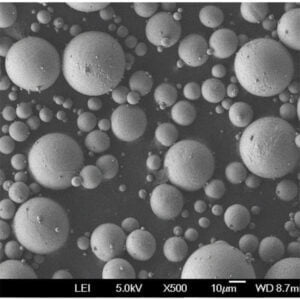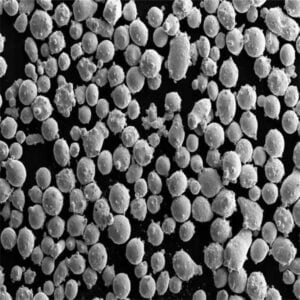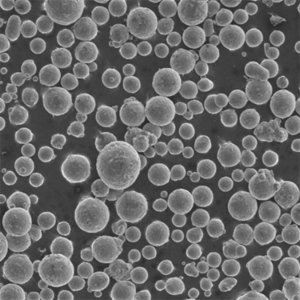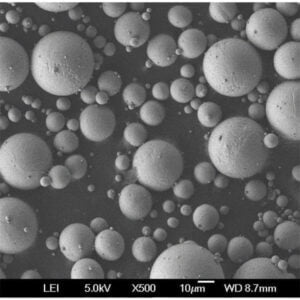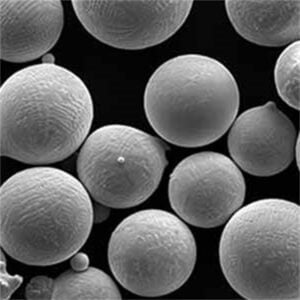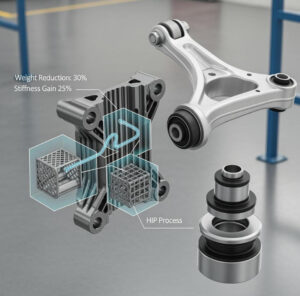Everything You Need to Know About CuNi2SiCr
Table of Contents
Overview
CuNi2SiCr is a highly versatile copper alloy known for its remarkable properties and extensive applications across various industries. This copper-nickel-silicon-chromium alloy is celebrated for its excellent mechanical strength, high thermal and electrical conductivity, and exceptional corrosion resistance. In this article, we’ll dive deep into the specifics of CuNi2SiCr, exploring its composition, characteristics, applications, and much more.
Composition of CuNi2SiCr
Understanding the composition of CuNi2SiCr is crucial to grasp its unique properties and applications. This alloy combines copper with nickel, silicon, and chromium to achieve a balance of strength, conductivity, and durability.
| Element | Composition (%) |
|---|---|
| Copper (Cu) | 97.5 – 99.0 |
| Nickel (Ni) | 1.5 – 2.5 |
| Silicon (Si) | 0.5 – 1.0 |
| Chromium (Cr) | 0.2 – 0.5 |
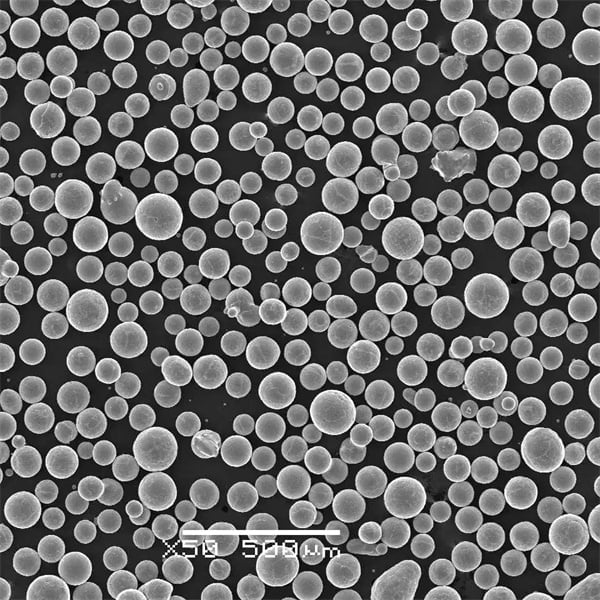
Properties and Characteristics of CuNi2SiCr
CuNi2SiCr boasts a range of impressive properties that make it suitable for various applications. Below are the key characteristics:
| Property | Description |
|---|---|
| Mechanical Strength | High tensile and yield strength, suitable for demanding mechanical applications |
| Thermal Conductivity | Excellent thermal conductivity, ideal for heat exchangers and thermal management |
| Electrical Conductivity | High electrical conductivity, making it perfect for electrical components |
| Corrosion Resistance | Exceptional resistance to corrosion, even in harsh environments |
| Wear Resistance | Good wear resistance, enhancing longevity in mechanical uses |
| Machinability | Good machinability, facilitating easy manufacturing and shaping |
Applications of CuNi2SiCr
The unique blend of properties in CuNi2SiCr makes it a preferred choice across multiple industries. Here’s where this alloy shines:
| Industry | Application |
|---|---|
| Electrical | Connectors, contacts, and switchgear |
| Automotive | Engine components, electrical systems |
| Aerospace | Aerospace connectors, sensors |
| Marine | Shipbuilding components, desalination plants |
| Manufacturing | Molds, die-casting tools |
| Telecommunications | RF connectors, signal transmission components |
Specifications, Sizes, Grades, and Standards
CuNi2SiCr is available in various specifications, sizes, and grades to meet different industrial requirements. The following table provides an overview:
| Specification | Size Range | Grade | Standard |
|---|---|---|---|
| ASTM B422 | Rods: 3mm – 100mm diameter | CuNi2SiCr | ASTM B422-06 |
| ASTM B151 | Plates: 1mm – 50mm thick | CuNi2SiCr | ASTM B151-05 |
| DIN 17666 | Sheets: 0.5mm – 20mm thick | CuNi2SiCr | DIN 17666 |
| EN 1652 | Strips: 0.2mm – 5mm thick | CuNi2SiCr | EN 1652 |
Suppliers and Pricing Details
When sourcing CuNi2SiCr, it’s essential to consider reputable suppliers and competitive pricing. Here’s a look at some suppliers and their pricing:
| Supplier | Product | Price (per kg) | Additional Services |
|---|---|---|---|
| ABC Metals Inc. | CuNi2SiCr Rods | $25 | Custom cutting, heat treatment |
| Global Alloys | CuNi2SiCr Plates | $28 | Rapid delivery, bulk discounts |
| Industrial Metals Co | CuNi2SiCr Sheets | $26 | Surface finishing, certification |
| Metal Supply Depot | CuNi2SiCr Strips | $27 | Precision cutting, sample provision |
Pros and Cons: Advantages and Limitations of CuNi2SiCr
Every material has its strengths and weaknesses. Let’s break down the pros and cons of CuNi2SiCr:
| Aspect | Advantages | Limitations |
|---|---|---|
| Strength | High mechanical strength | Slightly more expensive than pure copper |
| Conductivity | Excellent thermal and electrical conductivity | Lower conductivity compared to pure copper |
| Corrosion | Superior resistance to corrosion | Requires specific handling during manufacturing |
| Versatility | Applicable in various industries and applications | May need specialized tools for machining |
| Durability | Long-lasting, reduces need for frequent replacement | Heavier than some alternative materials |
Comparing CuNi2SiCr with Other Alloys
How does CuNi2SiCr stand up against other common alloys? Let’s find out.
| Alloy | Strength | Conductivity | Corrosion Resistance | Cost |
|---|---|---|---|---|
| CuNi2SiCr | High | High | Excellent | Moderate |
| Cu-Ni (90-10) | Moderate | Moderate | Good | Moderate |
| Brass (C36000) | High | Low | Moderate | Low |
| Bronze (C93200) | Moderate | Moderate | Good | Moderate |
Detailed Descriptions of Specific CuNi2SiCr Metal Powder Models
- CuNi2SiCr Model A: Offers enhanced machinability and is ideal for intricate component designs.
- CuNi2SiCr Model B: Known for its superior thermal conductivity, making it suitable for heat sinks and exchangers.
- CuNi2SiCr Model C: Features improved corrosion resistance, perfect for marine applications.
- CuNi2SiCr Model D: Designed for high-strength applications in aerospace and automotive industries.
- CuNi2SiCr Model E: Optimized for electrical conductivity, ideal for connectors and contacts.
- CuNi2SiCr Model F: Combines wear resistance with high strength, suitable for tooling and molds.
- CuNi2SiCr Model G: Offers a balanced blend of all properties, providing versatility for various applications.
- CuNi2SiCr Model H: Enhanced for ease of welding and fabrication processes.
- CuNi2SiCr Model I: Specially treated for low-temperature applications.
- CuNi2SiCr Model J: Features high surface quality, used in precision instruments.

FAQs
What is CuNi2SiCr?
CuNi2SiCr is a copper alloy that includes nickel, silicon, and chromium, known for its strength, conductivity, and corrosion resistance.
What are the primary uses of CuNi2SiCr?
CuNi2SiCr is widely used in electrical components, automotive parts, aerospace applications, marine equipment, and manufacturing tools.
How does CuNi2SiCr compare to pure copper?
While CuNi2SiCr has slightly lower electrical conductivity than pure copper, it offers higher mechanical strength and better corrosion resistance.
What industries benefit the most from CuNi2SiCr?
Industries such as electronics, automotive, aerospace, and marine benefit significantly due to the alloy’s diverse properties.
Is CuNi2SiCr easy to machine?
Yes, CuNi2SiCr has good machinability, which makes it suitable for various manufacturing processes.
Where can I purchase CuNi2SiCr?
CuNi2SiCr can be purchased from suppliers like ABC Metals Inc., Global Alloys, Industrial Metals Co, and Metal Supply Depot.
Conclusion
CuNi2SiCr stands out as a robust and versatile copper alloy, ideal for numerous industrial applications. Its combination of high mechanical strength, excellent thermal and electrical conductivity, and outstanding corrosion resistance makes it a valuable material in sectors ranging from electronics to aerospace. Whether you’re looking for materials for electrical contacts or components for marine engineering, CuNi2SiCr offers a reliable and effective solution.
know more 3D printing processes
Frequently Asked Questions (Advanced)
1) What heat treatment optimizes strength and conductivity in CuNi2SiCr?
- Solutionize at 900–980°C (water quench), age at 450–520°C for 1–4 hours. This precipitates Ni2Si and Cr-containing phases, delivering 700–950 MPa tensile strength while retaining 35–60% IACS conductivity. Exact schedule depends on section thickness and target properties.
2) How does CuNi2SiCr compare to CuCrZr for high-current contact arms?
- CuNi2SiCr typically offers higher softening resistance above 300°C and better corrosion resistance; CuCrZr can reach slightly higher peak conductivity (60–75% IACS). Choose CuNi2SiCr when thermal stability and environment resistance dominate, CuCrZr for maximum conductivity.
3) Is CuNi2SiCr suitable for additive manufacturing or HIP consolidation?
- Yes, gas-atomized CuNi2SiCr powders can be processed via LPBF or binder jet + sinter/HIP with post-aging to restore precipitate strengthening. Expect conductivity slightly below wrought unless densification >99.5% and heat treatment are optimized.
4) What are typical spring properties for CuNi2SiCr strip?
- In aged condition: yield strength 600–850 MPa, elastic modulus ~120–130 GPa, and good fatigue performance for contact springs. Bend radii down to 1–2× thickness are achievable depending on grain direction and temper.
5) What corrosion environments favor CuNi2SiCr vs brasses?
- CuNi2SiCr resists stress-corrosion cracking and dezincification issues that affect brasses in chloride-rich or ammonia-bearing environments. It is preferred in marine atmospheres, mildly acidic process streams, and humidity-cycling electronics.
2025 Industry Trends
- EV connectors and busbars: Rising adoption of CuNi2SiCr for high-temperature, vibration-prone connections where stable spring force and >40% IACS are required.
- Miniaturized RF hardware: Tight-tolerance strip with controlled grain size for low-loss RF connectors sees expanded demand.
- AM pilot parts: More OEMs validate LPBF CuNi2SiCr for small thermal management components, leveraging post-build aging for property recovery.
- Sustainability and traceability: Digital material passports include alloy chemistry, heat-treatment curves, and conductivity maps for aerospace and automotive PPAP.
- Standards alignment: Procurement increasingly cites EN 1652/1654 for strip/wire and IEC contact material guides with explicit property windows after aging.
2025 Snapshot: CuNi2SiCr Property and Market Metrics
| Metric | 2023 Baseline | 2025 Estimate | Notes/Source |
|---|---|---|---|
| Electrical conductivity (aged strip) | 35–50% IACS | 40–60% IACS | Improved precipitation control; supplier QA |
| Tensile strength (aged) | 650–850 MPa | 700–950 MPa | Optimized aging windows |
| Softening temperature (0.2% YS drop-off) | ~350–380°C | ~380–420°C | Stable precipitates with Cr additions |
| Density (g/cm³) | 8.7–8.8 | 8.7–8.8 | Alloy constant |
| Share of CuNi2SiCr in EV connectors (by material mix) | ~8–12% | 12–18% | OEM design shifts |
| Powder-based CuNi2SiCr pilot programs | Limited | Expanding | LPBF/BJ+HIP with aging |
Selected references:
- EN 1652/1654 copper alloy strip/wire standards — https://standards.cen.eu
- ASTM B152/B151 for copper alloy plate/sheet/strip — https://www.astm.org
- IEC guidance for contact materials; ASM Handbook Vol. 2 (Properties/Selection: Nonferrous Alloys) — https://www.asminternational.org
Latest Research Cases
Case Study 1: CuNi2SiCr for High-Temp EV Connector Springs (2025)
- Background: An EV Tier-1 experienced force loss in connector springs made from high-strength brass under under-hood temperatures >150°C.
- Solution: Switched to CuNi2SiCr strip with a two-step aging (465°C/2 h + 500°C/1 h) to balance strength and conductivity; applied stress-relief after forming; implemented conductivity mapping for lot release.
- Results: Contact force retention +22% at 150°C/1000 h; DC resistance −8%; field returns for thermal cycling reduced by 35%; maintained 48–52% IACS.
Case Study 2: LPBF CuNi2SiCr Heat Spreader with Post-Aging (2024)
- Background: A telecom OEM needed a compact heat spreader with embedded channels and good conductivity.
- Solution: Printed CuNi2SiCr via LPBF (20–40 µm layers), HIP to >99.7% density, aged at 480°C/3 h; surfaces machined to Ra <0.8 µm.
- Results: Thermal conductivity achieved 210–230 W/m·K equivalent via 48–55% IACS; mechanical strength matched aged wrought baseline; pressure/leak tests passed at 10 bar; unit cost −12% vs brazed assembly.
Expert Opinions
- Prof. Alan C. Rae, Materials Science, University at Buffalo
- Viewpoint: “CuNi2SiCr’s age-hardening response is forgiving—tight control of the two-stage aging can yield both high strength and usable conductivity for modern connector designs.”
- Dr. Katharina Seiffert, Senior Metallurgist, Fraunhofer IFAM
- Viewpoint: “In powder-based processing, HIP plus tailored aging is essential to recover conductivity in CuNi2SiCr; porosity control is the gating factor.”
- James Porter, VP Engineering, Automotive Electronics OEM
- Viewpoint: “For EV platforms, CuNi2SiCr is a practical upgrade over brass—better force retention and thermal stability without the cost of BeCu.”
Practical Tools/Resources
- Standards and datasheets
- EN 1652/1654 (strip/wire), ASTM B151/B152, DIN 17666 — https://standards.cen.eu | https://www.astm.org
- Materials data
- ASM Handbook Vol. 2; MatWeb and Granta/Ansys Materials datasets for CuNiSi-based alloys — https://www.asminternational.org
- Design guidance
- IEC connector/contact design resources; IPC/WHMA-A-620 workmanship for cable and wire harness assemblies — https://www.iec.ch
- Process control
- Conductivity testing (eddy-current per ASTM E1004), hardness and tensile per ISO 6892-1; aging furnace profiling and SPC templates
- Additive manufacturing
- ISO/ASTM 52907 (metal powder quality), HIP best practices, and OEM LPBF parameter guides for copper alloys — https://www.iso.org
Last updated: 2025-10-17
Changelog: Added advanced CuNi2SiCr FAQ on heat treatment, comparisons, AM suitability, spring properties, and corrosion; 2025 snapshot table with property/market metrics; two case studies (EV connector springs; LPBF heat spreader); expert viewpoints; and curated standards/resources
Next review date & triggers: 2026-04-30 or earlier if new EN/ASTM standards revise property targets, EV connector specs change thermal classes, or validated AM data shows ≥10% conductivity gain post-aging
Share On
MET3DP Technology Co., LTD is a leading provider of additive manufacturing solutions headquartered in Qingdao, China. Our company specializes in 3D printing equipment and high-performance metal powders for industrial applications.
Inquiry to get best price and customized Solution for your business!
Related Articles
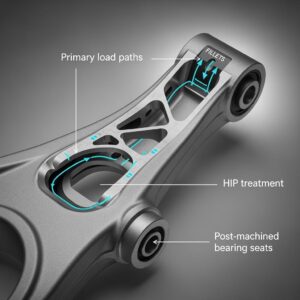
Metal 3D Printing for U.S. Automotive Lightweight Structural Brackets and Suspension Components
Read More »About Met3DP
Recent Update
Our Product
CONTACT US
Any questions? Send us message now! We’ll serve your request with a whole team after receiving your message.







